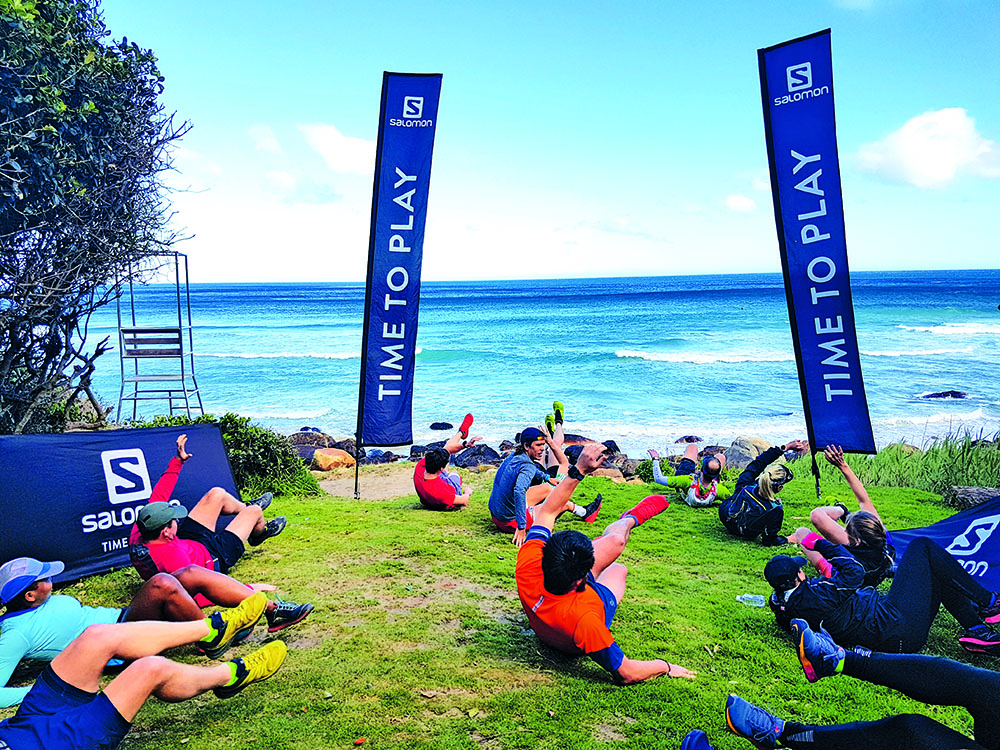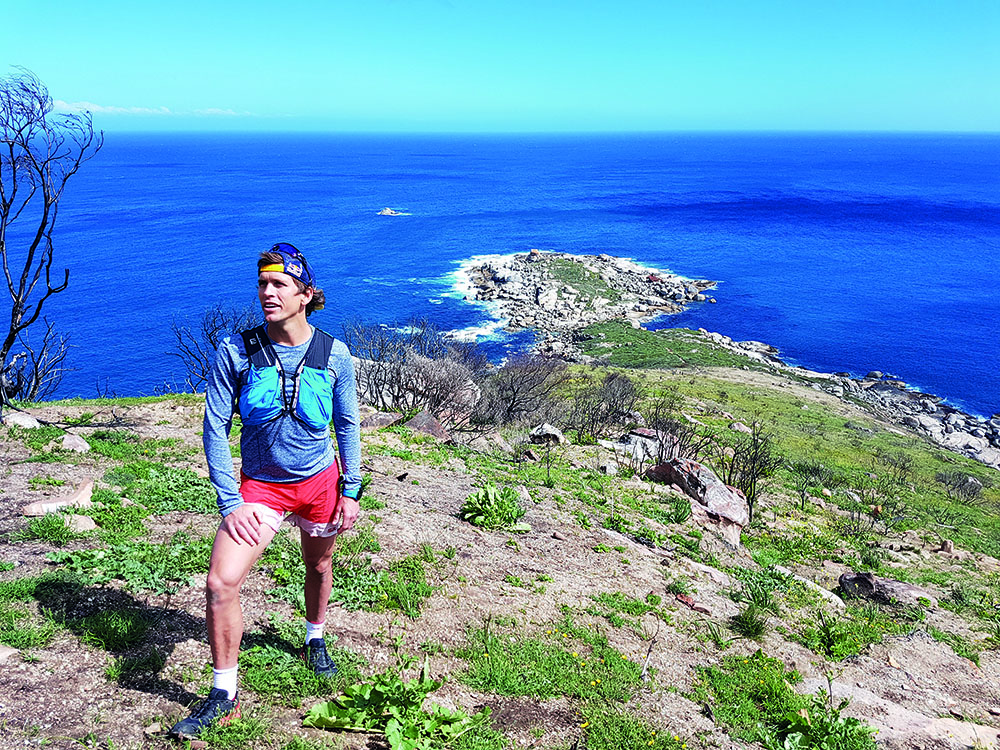5 Tips To Tackle Trail Like A Pro!
Ryan Sandes recently hosted a skills clinic in Llandudno, Cape Town, and gave the attending runners pointers on how to tackle the trails more comfortably.
TIP #1: EFFICIENT RUNNING
Warm up well to mobilise your joints and muscles. Sandes recommends performing hip aeroplanes, rock-over-toes and baby get-ups.
Ease into your run – it’s quite normal for your body to feel a bit ‘reluctant’ for the first few kilometres of a run; just bear with it, and soon you’ll feel like your body’s on your team!
Don’t overthink your running style; just run naturally, and let the trail flow.
How to power climb:
– Take smaller, faster steps, rather than bigger, slower strides. You’ll climb more efficiently with a shorter stride and higher cadence.
– Pump your arms to maximise momentum and power.
– Don’t run uphill to exhaustion; rather power-hike, before you’re forced to.
– When power-hiking, place your hands on your quads and push down to power up the hill.
RELATED: The 7 Rules Of Trail Safety
How to descend fast:
– Don’t pull on the brakes when you’re running down hill. Allow gravity to take you, and try to stay controlled.
– Pick your line on technical descents – your eye should be looking five to eight metres ahead.
– Don’t try to descend so fast that it costs you your legs – descending at speed can hammer your quads.
– Use your arms for balance. Hold them lower and keep them loose and relaxed, to aid your centre of gravity.
TIP #2: Preparing for an ultra
Select your goal race and work backwards from that. It’s the best way to plan your training.
Follow a structured training programme suited to the race you’re aiming for. But don’t be too rigid about sticking to it – there’s no point in worrying if your programme is interrupted by flu or something else out of your control.
Be honest about the shape you’re in. While it’s good to seek top advice, once you start preparing for the race, you are your own best coach. Stay in tune with your body.
Plan your training to fit in busy work periods, family time and other responsibilities.
Periodise your training. The ideal four-week training block involves a three-week build-up followed by one week of lighter training.
Incorporate back-to-back long runs in the months leading up to your race. This long run (e.g. 50km), followed by another long run (e.g. 30km) the following day, teaches your body to cope with running on tired legs. Make them time-based, but with a distance goal in mind.
Keep yourself motivated. Preparing for an ultra happens over several months. Do long runs with friends or in a group.
Involve your family. Your long runs will keep you busy for hours at a time, and you don’t want your family to think you’re shirking responsibilities. Keep your family on your side by involving them in your runs – arrange to meet them at your halfway point, or plan for your kids to hand you water and snacks along your route.
Stay healthy and strong: eat well, sleep lots, use a foam roller or go for regular massages, cross train, strengthen your core, and work on your mobility exercises.
Mix up your training. Just because the race you’re preparing for is mountainous, it doesn’t mean you should only do hill reps – training on level trail will also be beneficial.
RELATED: Ask Ryan Sandes: What Trail Shoes Should I Buy?
Taper. That doesn’t mean no running – it simply means less mileage and less intensity. Begin your taper two weeks before race day, by reducing your mileage to 60% of what you’ve been doing. With one week to go, reduce that by half. Two days before the race, have a rest day, then use the day before race day to go for a short, quick jog to wake up your legs.

TIP #3: Gear
Test your kit and gear thoroughly before race day. Wear it on a few long runs before the event to test its comfort, thermal qualities, whether or not it chafes your skin, etc.
Choose what works for you, rather than whatever’s the latest craze.
Check the race’s mandatory kit list, and ensure you have everything.
On race morning, CHECK AGAIN! Have you got all the gear required, and do you remember where you’ve put it?
TIP #4: Race-day nutrition
Practise eating A VARIETY OF food (e.g. snacks, bars and gels) during training, so you’ll know what works best for you. Fuel up on long runs, and in the same conditions you expect for your race – some foods react differently at different temperatures.
Plan your fuel for the conditions you expect to run in (e.g. if you’ll be running in heat, be sure to carry electrolytes or salt supplements). Plan what you’ll eat and drink, and when.
Be flexible. Unexpected things can happen during an ultra – when it comes to fuel, have a back-up plan in place in case things go wrong.
RELATED: Make Your Own Bite-Sized Running Snacks
What food will be offered at aid stations? Familiarise yourself with it.
Be efficient at aid stations: select one or two stations where you intend to take in more fuel to maximise kilojoules.

TIP #5: Race-day strategy
Always have a plan B and C, just in case things happen that are out of your control (e.g. extreme weather conditions).
Stay upbeat. Even in the perfect race, you will go through highs and lows. Remember, the person who manages their lows best tends to perform better.
When low points happen… back off your pace a little, and try to eat.
Smart pacing = smart racing Be aware; don’t hesitate to adapt your pace.
Run your own race, and run according to your strengths.
Look after your body during the race – blisters, chafing, sunburn, hydration, heat and cold are examples of factors you need to self-manage.
Brief your race crew. Your crew should be thoroughly aware of your race plan and what you’ll need.
Does the race have a drop-bag point? Use it to your advantage. Pack: spare kit, a variety of snacks, extra medical kit, sunblock and spare shoes, etc.
READ MORE ON: ryan-sandes TRAIL RUNNING TIPS trail-running



